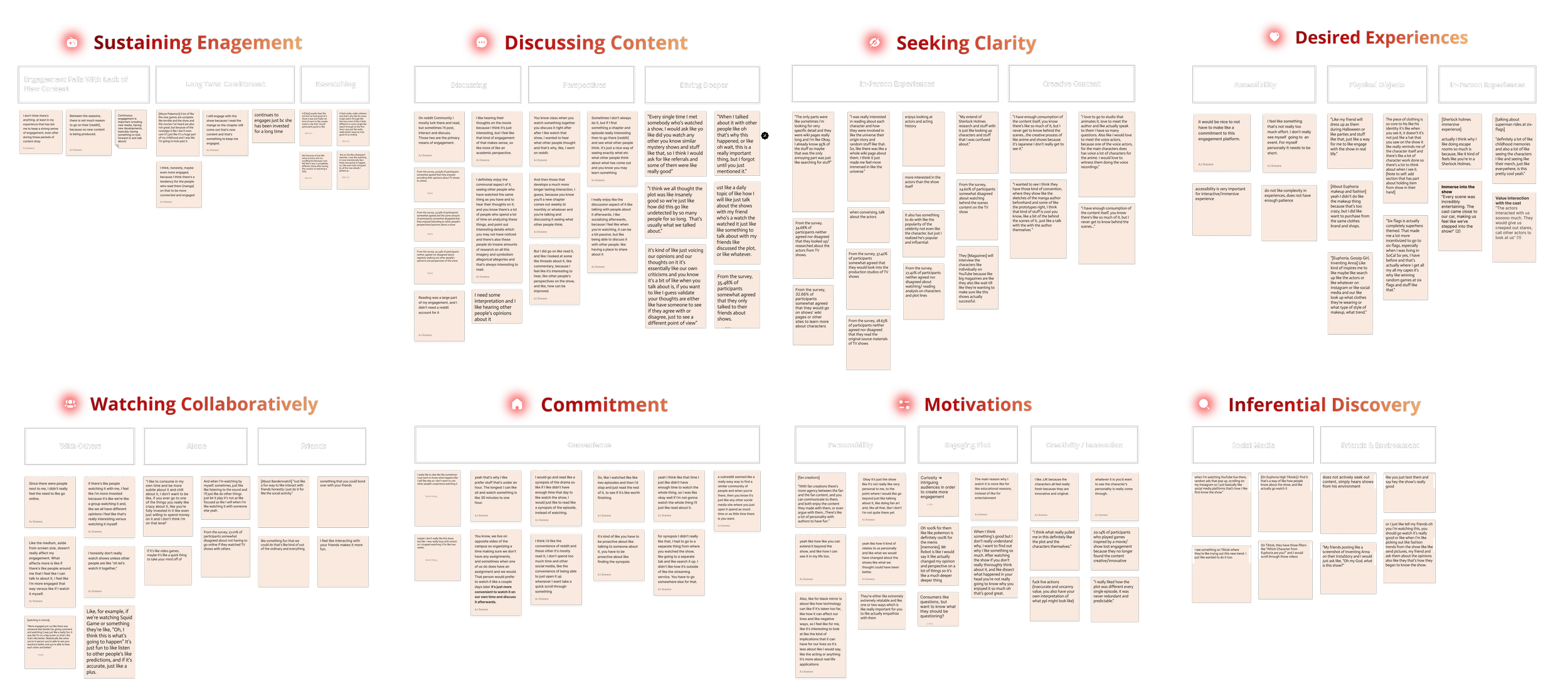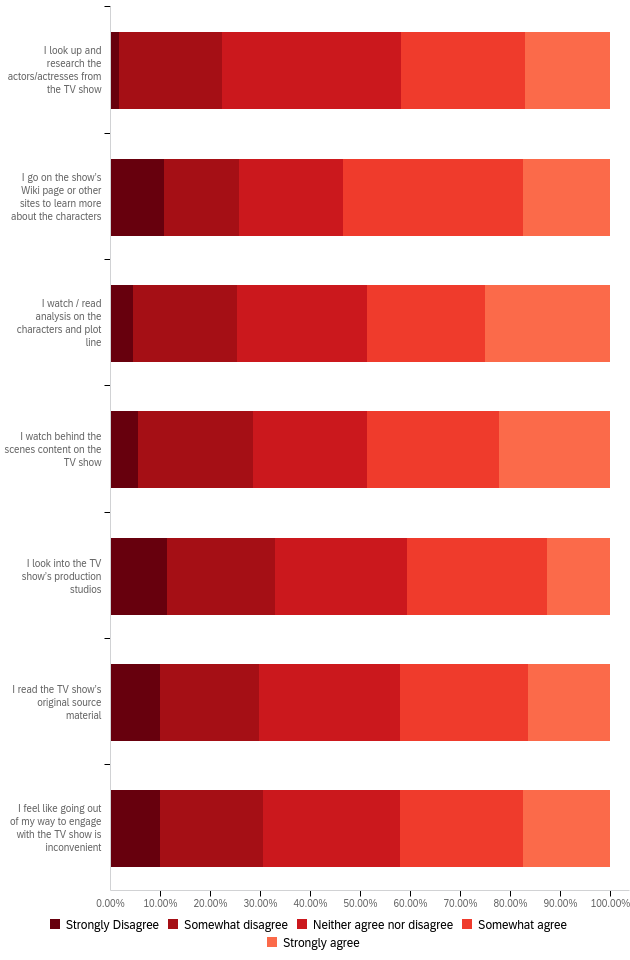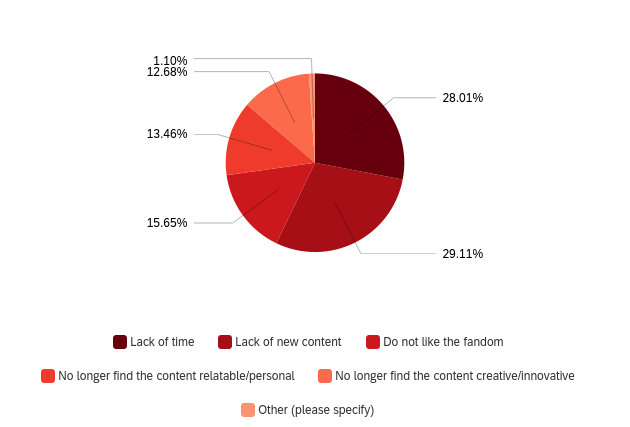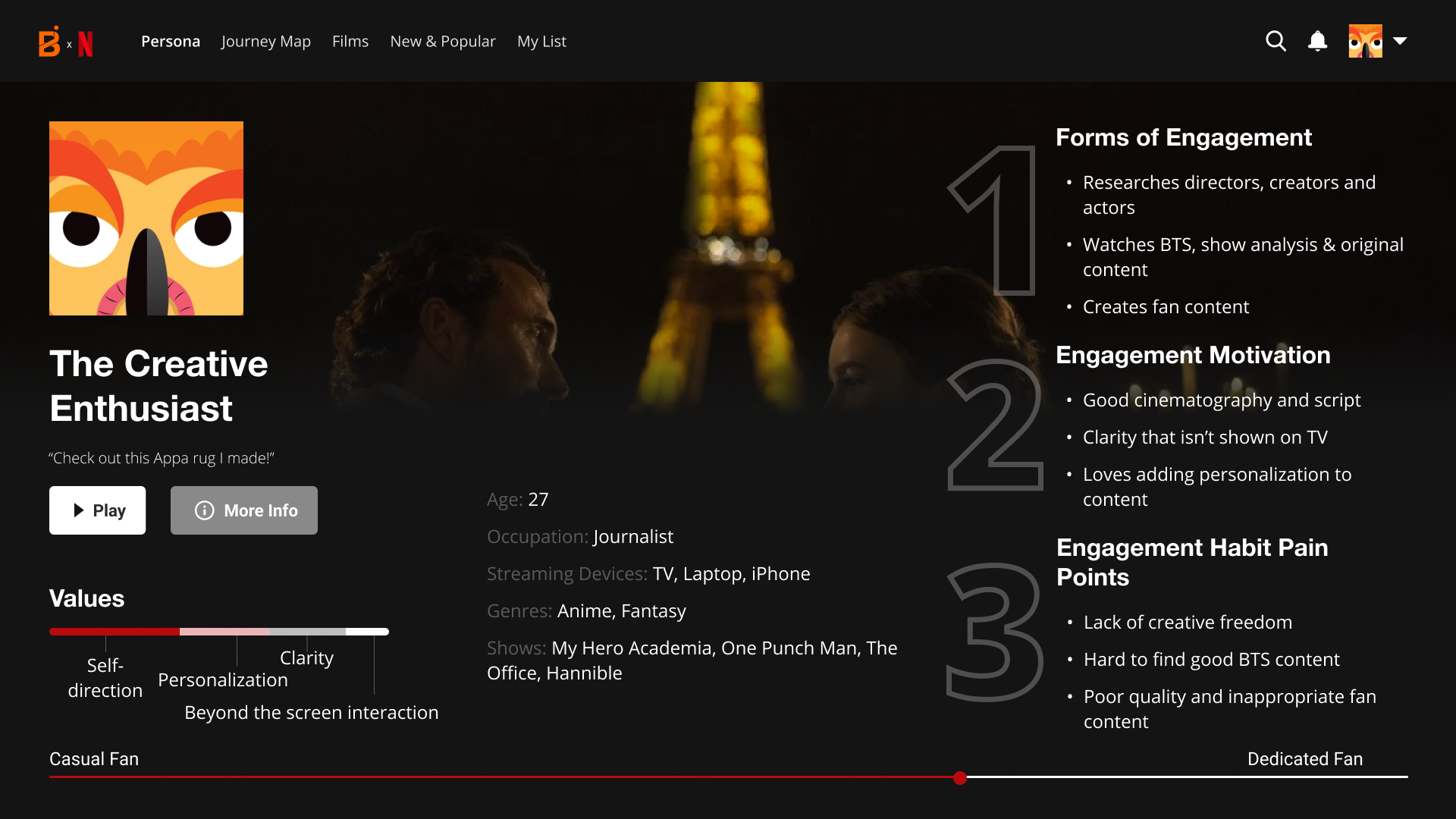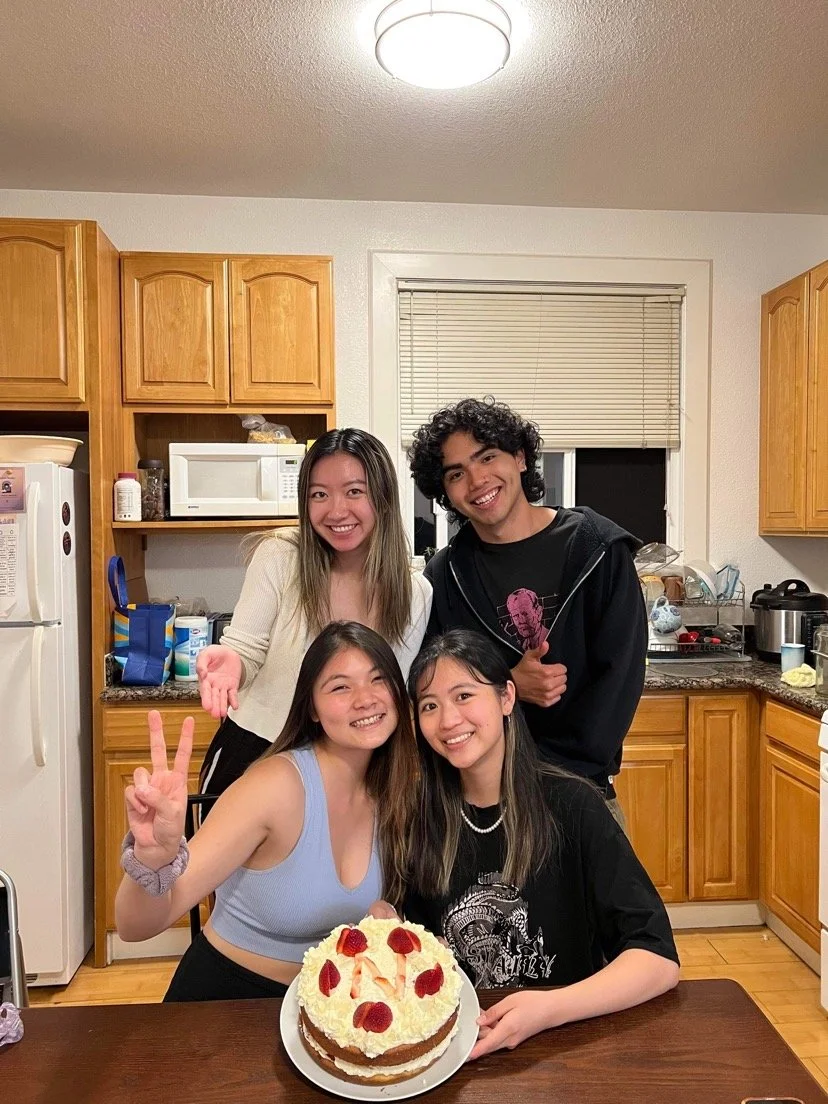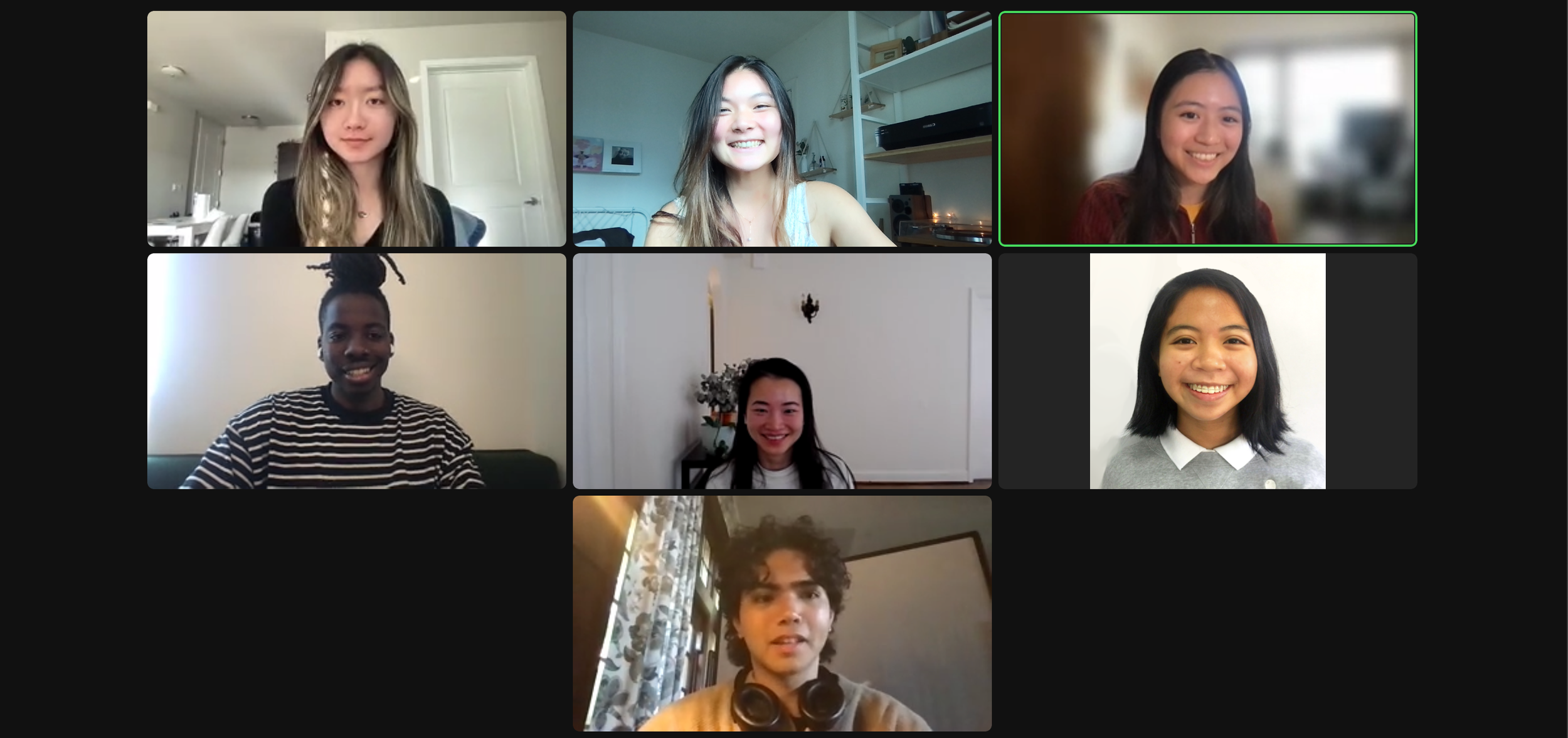
Netflix
Understanding fandoms and creating new interactive and immersive experiences.
Timeline: January 2022 - May 2022
Team: Jasmine Chen, Izabel Zheng, Cici Wei, Rapha Felipe
Discipline: UX Research, Product Ideation, Strategy
Tools: Figma, Grounded Theory, Survey Science
Context
The UX Research and Product Design teams at Netflix challenged Berkeley Innovation to discover what’s next for the Netflix platform. With the unprecedented success of Squid Games' Pop Up exhibits and existing interactive content like Black Mirror: Bandersnatch, Netflix wanted to build off existing content and extend platform experiences to further engage users.
As a way to guide our research plan, we followed these research questions:
What types of new platform experiences would increase viewer engagement with Netflix?
Are there any specific types of content that audiences want to see from Netflix?
What are the potential consequences to developing new types of content or methods of engaging with the Netflix app?
Research Question
How might we increase Netflix viewer engagement through interactive and immersive experiences?
Research Methods
Timeline
Secondary research (2.5 weeks)
User interviews (2.5 weeks)
Grounded Theory + Affinity Mapping (1 week)
Constructing + Survey disbursement (2 weeks)
Synthesis (1.5 weeks)
Ideation, Low-Fidelity prototype, Concept refinement (2 weeks)
User Testing (.5 weeks)
Mid - Fidelity prototype (1 week)
Research Report (1 week).
Secondary Research
Netflix’s problem was large in scope, so we spent our first sprint conducting competitor analysis, analyzing media study academic literature on fandoms, and reviewing past research on viewer engagement that Netflix has conducted. Through this preliminary research, we explored four topics:
Cultures and Trends within Fandoms
General Feelings about Immersive Experiences
Different types of Immersive and Interactive Experiences
Behavior of Netflix Members
Key Insights
General Feelings about Immersive Experiences
In general, fans value interaction with actors and cast, because it creates a connection with the show that is past watching fictional characters.
Participants of immersive experiences enjoy it when their actions have direct consequences.
Many experiences are tailored towards invested fans.
Different Types of Immersive and Interactive Experiences:
Previous immersive / interactive experiences from Netflix have been used for experiential marketing purposes only. It was only until recently with the unprecedented success of Squid games, where Pop Up exhibits were created after the show to sustain viewer engagement momentum.
Participants enjoy plot narrative within their experiences.
The “pressure to succeed” turns participants away from enjoying experiences. In other words, viewers don’t want to feel like they are “losing” or “failing” at an experience.
Cultures and Trends within Fandoms
Shows can only gain meaning if it is relevant to fans themselves and has the potential to expand both emotionally with the fan and physically with production. In other words, not all shows require immersive and interactive components or experiences: they need to have a fandom who yearns for experiences past the screen.
Regardless of in person viewing, fans act as active audiences via live tweeting on Twitter or commentary with friends/family members.
Valuable fans go beyond watching shows. They purchase merchandise, pay particular attention to program sponsors, and are willing to spend extra money on show-related experiences.
Behavior of Netflix Members
Fan networks are a double-edged sword: fans are heavily invested and will pay more money and dedicate more time for a media property but they are also very sensitive to every mistake.
More people react than create in fan networks.
TV success does not equal more fan engagement.
The Fan Continuum
Competitor Analysis
In order to be innovative with our solutions, we decided to conduct a competitor analysis on companies who have incorporated immersive experiences in their content platform to understand their strengths and weaknesses.
User Interviews
We wanted to obtain insight into TV show fans’ motivations for engagement and desires for extended platform experiences so we conducted user interviews.
Grounded Theory
As the research synthesis lead, I led my team to synthesize our qualitative data using a Grounded Theory approach. This approach buffers our preconceived ideas of potential solutions, and allows the research to lead us to creative, innovative, and novel solutions. Because the scope of immersive and interactive experiences are broad, it was important that our findings were connected to the data.
Four hypotheses and themes were derived from our Grounded Theory Synthesis, which helped us guide what we wanted to include in our mass survey.
Survey
We conducted a qualitative survey on 302 TV show fans to validate our Grounded Theory hypotheses and to assess viewer’s values on show-related experiences.
Key Insights
Participants agree the most with
Wanting to hear from writers and authors of the show
Going on external sites to seek extra content and information related to the show
Enjoying listening to other people’s perspectives and providing their own opinion about a TV show
Engagement with a show decreases when the viewer doesn’t have time and there is a lack of new content.
Fan created content and community focused collaborative platform experiences are most desired by survey participants.
Personas
From our user research, we developed three personas in order to humanize and illustrate pain points viewers have with existing content as well as their motivations for participating in potential extended Netflix platform experiences.
The Creative Enthusiast
The Creative Enthusiast runs to watch TV show analysis videos after they finish, appreciates director’s creative choices in cinematography, and sometimes makes their own fan-related content. They crave clarity, creative outlets, and additional content with their favorite TV shows.
The Social Follower
TV shows find the Social Follower, they don’t seek content themselves. Whether it’s a TV show trending on Tik Tok or all the buzz their friends keep talking about, they watch TV shows to follow the status quo. They love to contribute to a conversation about the show, but struggle to find a convenient way to watch a show they want and not what’s just trending.
The Connected Reviewer
Whether it’s going down Reddit holes, live tweeting during a show finale, or convincing others to watch their favorite TV show, the Connected Reviewer values perspectives and community. They wish their were more content during the off-season and want a more convenient way to share and seek opinions about their favorite show.
Journey Map
Before ideating solutions, we created journey maps for each of our personas in order to visualize where their engagement habits pitfall, and to understand where in their TV show viewing journey we could improve.
Visualizing Personas on the Fan Spectrum
Final Solutions + Recommendations
A Deeper look into the ideas + how they address our personas needs
Reflection
It was such a privilege to do UX research for Netflix as my first consulting project. With the scope of this project being quite large, it took around four months to complete the research report, and words cannot describe how much I learned. Well, I’ll try.
Creating a research plan is not only the hardest part, but it takes the longest.
I always thought the HCD process was intuitive — empathize, synthesize, ideate, create — however we were challenged to think of the unimaginable, to not only empathize with our users, but to research the interactions users have with media, fandoms, and experiences. We spent a lot of time figuring out our direction and solidifying a research attack. From conversing about the order of our methods, to being stumped on our research question, every meeting was completely worth it.
Don’t skip preliminary research and academic literature.
Reading academic literature and conducting competitor analysis helped shape our research trajectory. It provided a framework for story telling and allowed us to be innovative with our solutions.
I am really proud of the work my team and I did. We designed, created, and conducted a user experience research study from start to finish. We intend on presenting our report to the Netflix internal teams mid-summer 2022!
A huge thank you to the team over at Netflix — Lu Huang, Constantine Konstantakis, and Jared Culp — for being amazing mentors throughout the project!
Baked the BEST Netflix Cake for team bonding
Last Client meeting :(




